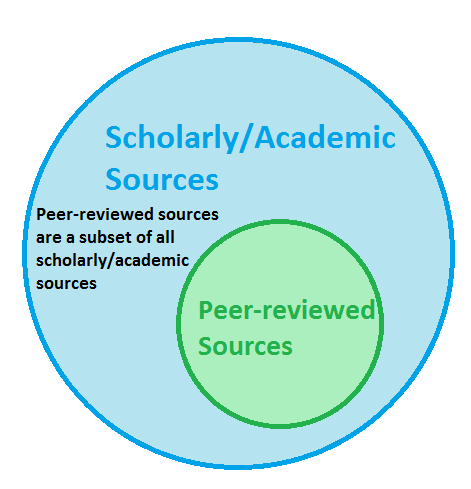5.2: Popular and scholarly sources
- Page ID
- 185983
Articles will make up the bulk of your college research, so this week's work is important! There are many types of articles, and they generally fit into two categories: popular and scholarly.
This video (4 minutes) introduces you to the primary differences of popular and scholarly articles: who writes them (authorship) and who they are written for (audience).
To recap:
Popular sources are generally written for a broad, general audience.
- No specialized knowledge is required to understand them.
- They're called "popular" because they're accessible for all readers (not necessarily because everyone likes them).
- The bulk of the information we interact with in the media everyday falls into the popular category.
- Authors are writers, but not necessarily content experts. Articles are typically written by journalists or magazine staff writers.
- Articles don't typically provide in-depth coverage of topics.
Practicing with popular sources in Week 5: You will find a popular resource in Gale eBooks/Gale Virtual Reference Library or Opposing Viewpoints.
Scholarly sources are written for experts, researchers, and students.
- Specialized knowledge is often required to understand them. Content is complex, nuanced, and in-depth. Specialized or discipline-specific language is used.
- Scholarly sources are long and share good, meaty information.
- Authors are experts in their fields: researchers conducting primary research, practitioners, professors and scholars.
- Author credentials are either provided in the article or easy to access. Credentials could include work experience, lived experience, and education.
- Scholarly sources add value to your learning process as they often provide original research and in-depth analysis at a level popular articles cannot match.
- Scholarly sources teach you and spur your thinking.
Practicing with scholarly sources in Week 5: You will find a scholarly resource in Academic Search Complete.
Peer-reviewed articles are ONE type of scholarly source.
But peer-reviewed articles are definitely not the only type of scholarly sources for you to use. Peer-reviewed articles are just one sub-set of scholarly publishing. They happen to fall on the far end of the scholarly continuum.
Other types of scholarly sources include:
- Books and eBooks
- Documentaries and educational films
- Websites
- Government reports
- White papers(opens in new window)
- Blogs
- Dissertations
- In-depth journalism reports
- Film, book, art critiques or analyses
You decide if a source is scholarly or popular.
Like the video said, the "scholarly" distinction is on a continuum. Scholarly is going to mean something different for all of you! There is no one definition, form, or expectation.
Use your CRAP information evaluation skills to determine where on the scholarly-popular continuum your sources fall.

